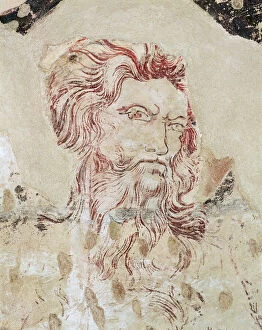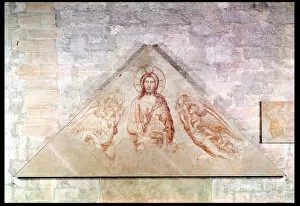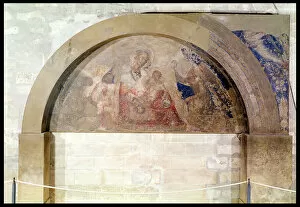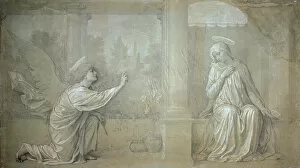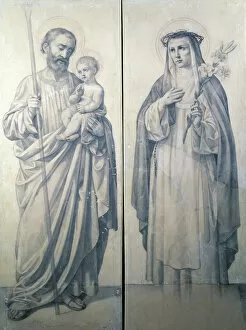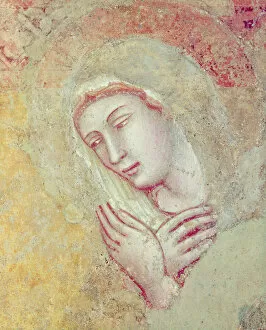Sinopia Collection
Sinopia, a captivating art technique that dates back to the 15th century, holds within its intricate details a glimpse into the human condition
All Professionally Made to Order for Quick Shipping
Sinopia, a captivating art technique that dates back to the 15th century, holds within its intricate details a glimpse into the human condition. In 1485, an era marked by both Avarice and Pride, sinopia frescoes emerged as powerful expressions of artistic prowess. One such example is the mesmerizing "Detail of St Onuphrius and scene from his life. " This tinted mural drawing and painting showcases the artist's mastery in capturing emotions through vibrant hues. The sinopia underpainting adds depth and richness to every stroke, immersing viewers in a world where spirituality intertwines with earthly existence. Another remarkable piece is the "Angel of the Annunciation, " which reveals how sinopia was used as an underpainting technique. As we gaze upon this detail from the Annunciation scene, we witness divine beauty taking shape before our eyes. The meticulous brushwork breathes life into each delicate feature of this heavenly messenger. Moving on to another masterpiece, we encounter a tympanum depicting Christ blessing his followers in 1341. Every minute aspect has been meticulously rendered using sinopia fresco techniques. The attention to detail is awe-inspiring; one can almost feel Christ's benevolent presence emanating from this artwork. In contrast to religious themes, it also found its way into secular subjects like battle tournaments adorned with marigold flowers representing Lancastrian SS collars. These vivid depictions capture not only physicality but also honor and chivalry amidst fierce competition. The preparatory drawings for various frescoes further highlight the versatility as an essential step in creating breathtaking masterpieces. From St Catherine of Siena's serene visage to St Christopher's protective aura - these pencil sketches transport us directly into their world while showcasing artists' dedication towards perfection. Lastly, let us marvel at two exquisite details: "Adoration of the Magi" and "Marriage of Isaac and Rebecca.


